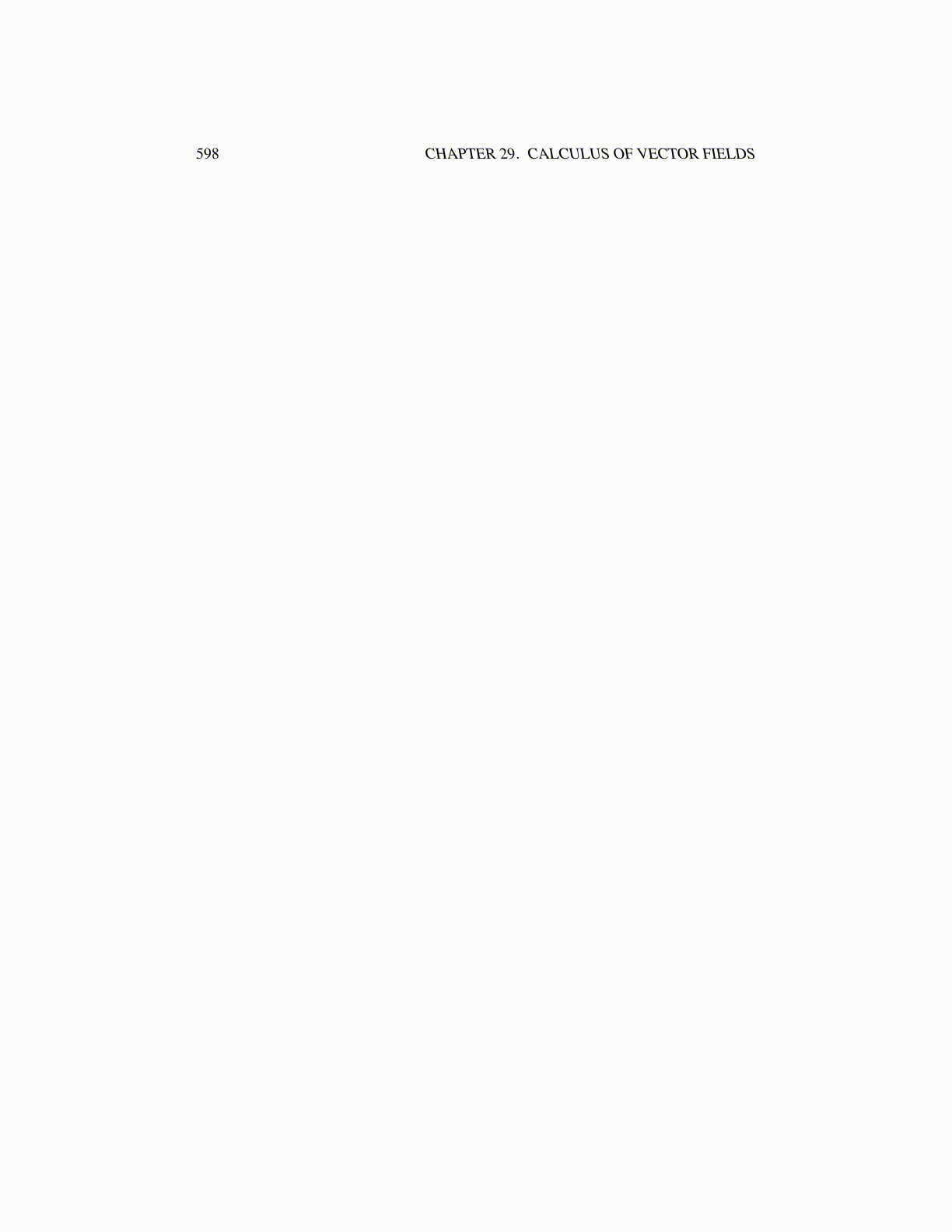
598 CHAPTER 30. STOKES AND GREEN’S THEOREMS
10. For F = (x,y,z), S is the part of the cylinder x2 + y2 = 1 between the planes z = 1and z = 3. Letting n be the unit normal which points away from the z axis, find∫
SF ·ndS.
11. Let S be the part of the sphere of radius a which lies between the two cones φ = π
4and φ = π
6 . Let F = (z,y,0). Find the flux integral∫
SF ·ndS.
12. Let S be the part of a sphere of radius a above the plane z = a2 ,F = (2x,1,1) and let
n be the unit upward normal on S. Find∫
SF ·ndS.
13. In the above, problem, let C be the boundary of S oriented counter clockwise asviewed from high on the z axis. Find
∫C 2xdx+dy+dz.
14. Let S be the top half of a sphere of radius a centered at 0 and let n be the unit outwardnormal. Let F = (0,0,z). Find
∫SF ·ndS.
15. Let D be a circle in the plane which has radius 1 and let C be its counter clockwiseboundary. Find
∫C ydx+ xdy.
16. Let D be a circle in the plane which has radius 1 and let C be its counter clockwiseboundary. Find
∫C ydx− xdy.
17. Find∫
C (x+ y)dx where C is the square curve which goes from (0,0) → (1,0) →(1,1)→ (0,1)→ (0,0).
18. Find the line integral∫
C (sinx+ y)dx+ y2dy where C is the oriented square
(0,0)→ (1,0)→ (1,1)→ (0,1)→ (0,0) .
19. Let P(x,y) = −yx2+y2 ,Q(x,y) = x
x2+y2 . Show Qx −Py = 0. Let D be the unit disk.Compute directly
∫C Pdx+Qdy where C is the counter clockwise circle of radius 1
which bounds the unit disk. Why don’t you get 0 for the line integral?
20. Let F =(2y, ln
(1+ y2
)+ x). Find
∫C F ·dR where C is the curve consisting of line
segments, (0,0)→ (1,0)→ (1,1)→ (0,0) .
30.3 Stoke’s Theorem from Green’s TheoremStoke’s theorem is a generalization of Green’s theorem which relates the integral over asurface to the integral around the boundary of the surface. These terms are a little differentfrom what occurs in R2. To describe this, consider a sock. The surface is the sock and itsboundary will be the edge of the opening of the sock in which you place your foot. Anotherway to think of this is to imagine a region in R2 of the sort discussed above for Green’stheorem. Suppose it is on a sheet of rubber and the sheet of rubber is stretched in threedimensions. The boundary of the resulting surface is the result of the stretching applied tothe boundary of the original region in R2. Here is a picture describing the situation.
∂S
S